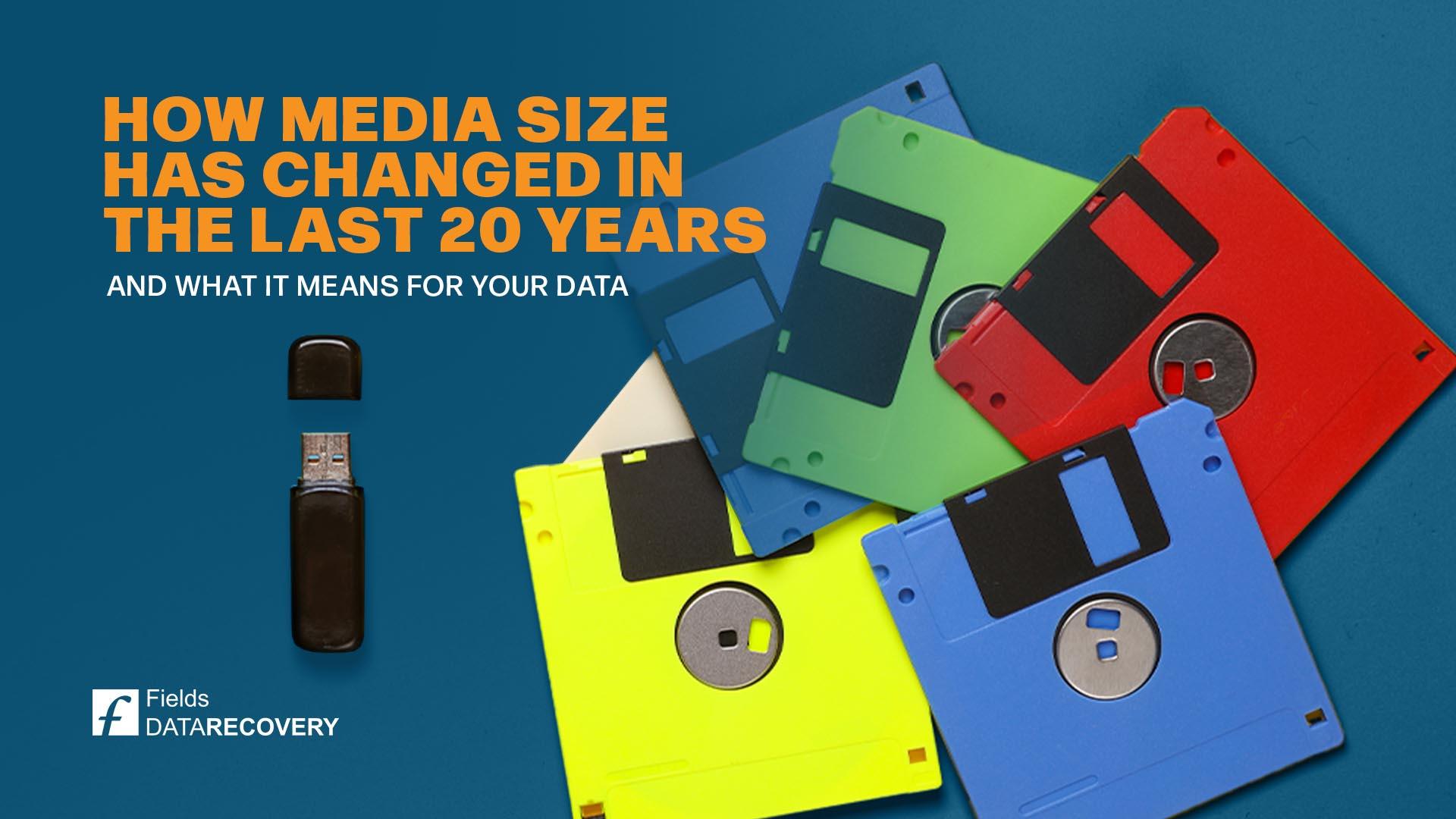How Media Size Has Changed in the Last 20 Years and What It Means for Your Data

Do you remember the days of floppy disks and CDs? Technology has come a long way since then, and so has the size of our media. Today, we have cloud storage, USB drives, and SD cards, but how have these advances in technology affected the size of our media? In this blog post, we'll explore the differences in media size compared to 20 years ago, and what this means for your data. Whether you're a business owner or just curious, keep reading to learn more.
How was data stored 20 years ago?
Twenty years ago, floppy disks were the primary means of storing and transferring data. These disks could hold a maximum of 1.44MB. Today, that amount of storage seems insignificant. In fact, a standard USB flash drive can hold anywhere from 4GB to 1TB of storage. Portable hard drives can hold even more. This means that you can store an incredible amount of data on a device that fits in your pocket.
The advancements of technology
The rise of cloud storage has also contributed to the increase in media size. Cloud storage systems like Google Drive and Dropbox allow users to store documents, photos, and videos online, without needing to rely on a physical device. The amount of storage you get with these services varies, but it's not uncommon to see offerings between 10GB and 2TB. Cloud storage has also made it incredibly easy to share files with others, regardless of where they are in the world.
Data recovery with the importance of larger media devices
As media sizes have grown, so has the need for more efficient data backup and disaster recovery solutions. Businesses need to ensure they have reliable backup systems in place to protect their data in the event of a disaster. This is where data recovery services come in. These services can help businesses recover lost or deleted data from damaged devices. Whether it's due to hardware failure, malware, or accidental deletion, data recovery services can be a lifesaver for businesses that rely on their data.
With larger media sizes, there's always a risk of losing more data than ever before. Luckily, there are steps you can take to protect your data. The first is to regularly back up your data to a separate device or cloud storage service. This ensures that, if anything happens to your primary device, you'll still have access to your data. Additionally, you can use data recovery software to help restore lost or deleted files. However, it's important to note that not all data is recoverable, so it's crucial to always have a backup plan in place.
Conclusion:
In conclusion, the growth of media size has greatly impacted how we store and protect our data. We've gone from floppy disks to USB flash drives and cloud storage, all of which offer incredible amounts of storage. However, with increased media size comes increased risk. It's important to always have a backup plan in place and to use data recovery services when necessary. As technology continues to advance, we can only expect media sizes to keep growing, so be sure to stay informed and proactive in protecting your data.
At Fields Data Recovery, we pride ourselves on our expertise and service, with a success rate of 92.5%, thousands of companies worldwide have trusted us to recover their lost data. Contact us today at 0800 083 7891 for our no data no fee recovery service so we can help you get your data back.
